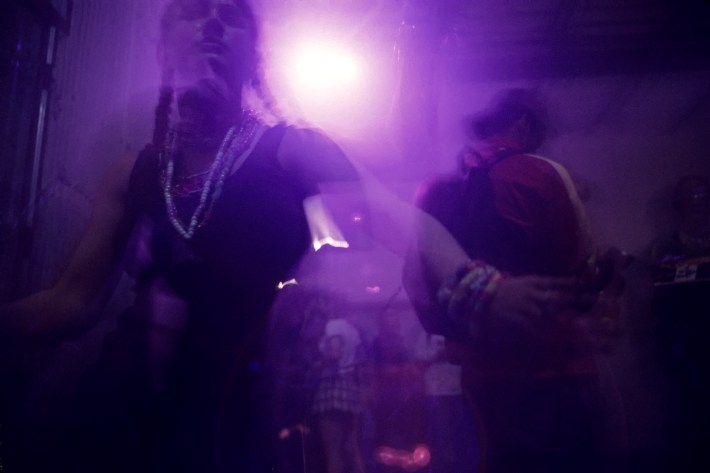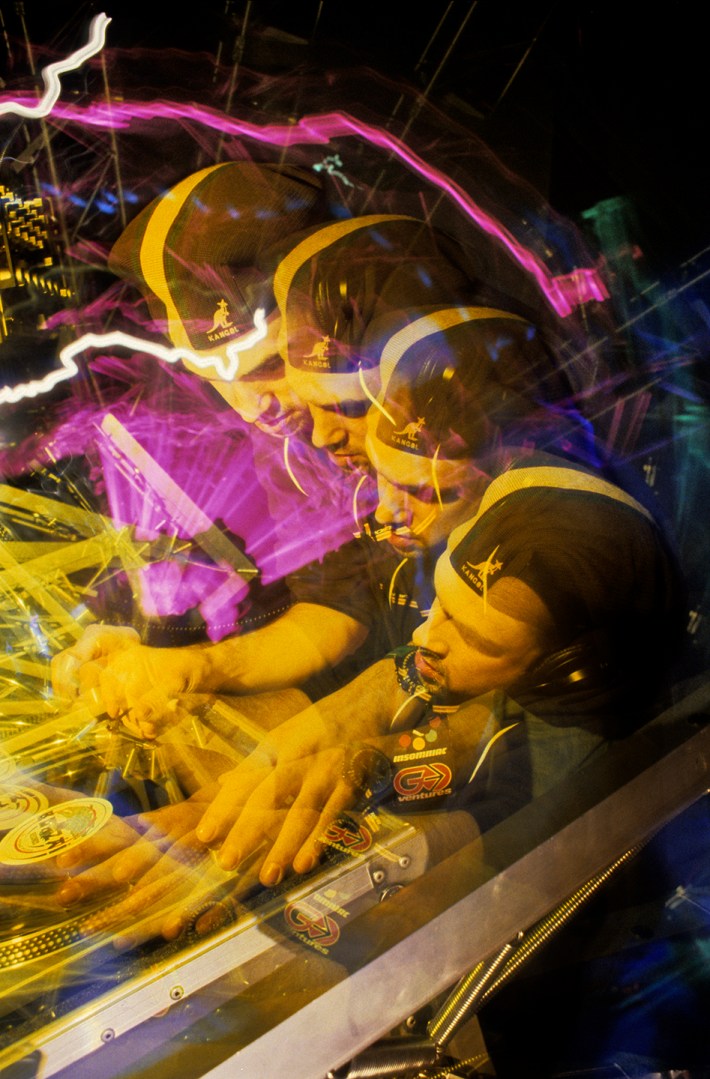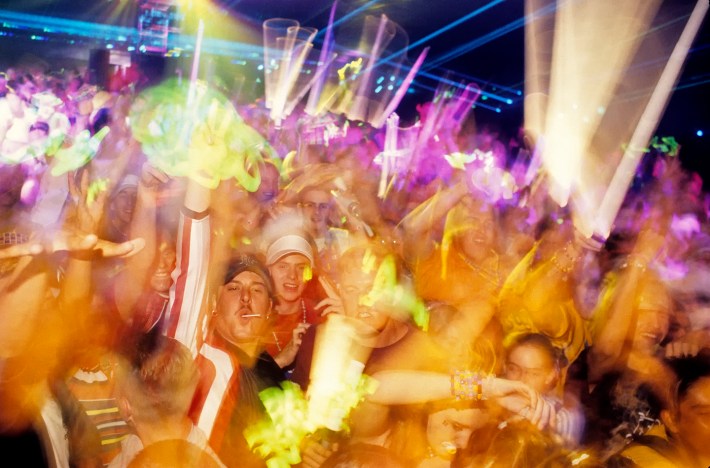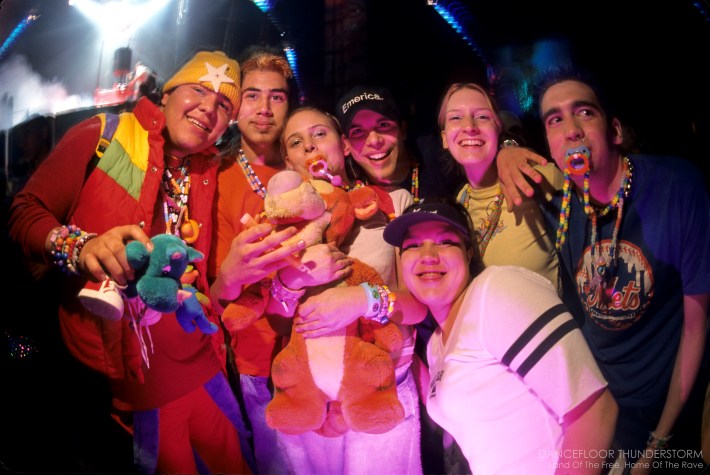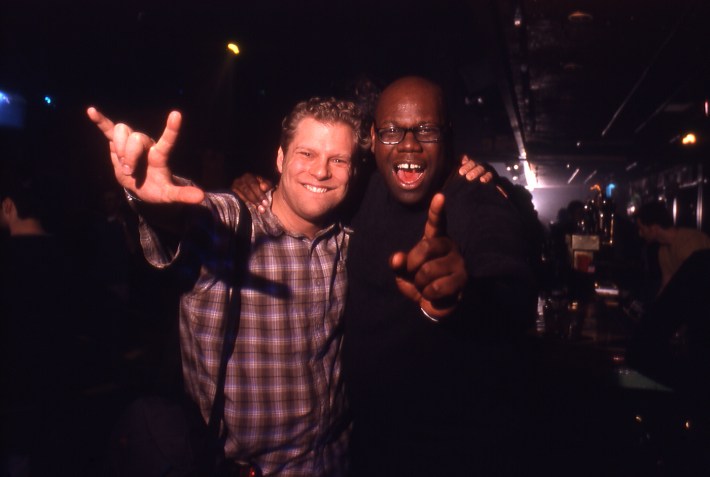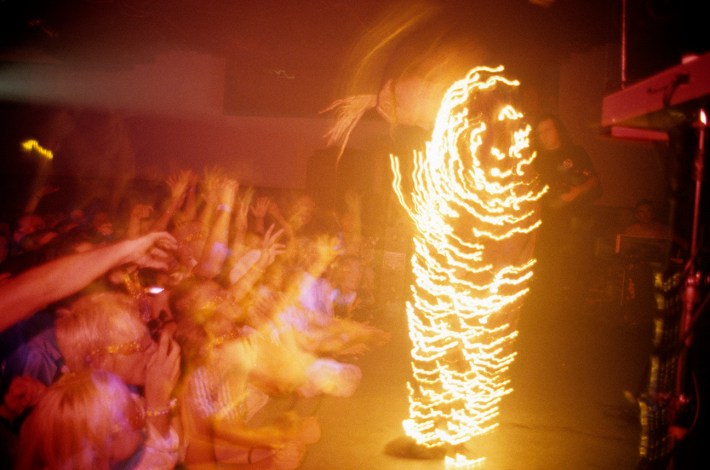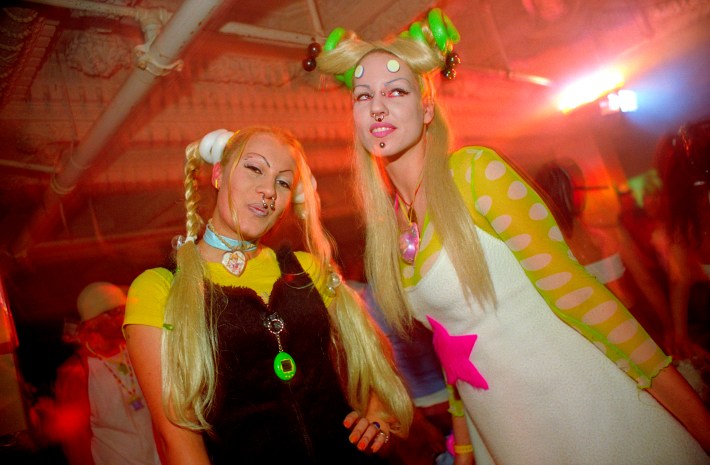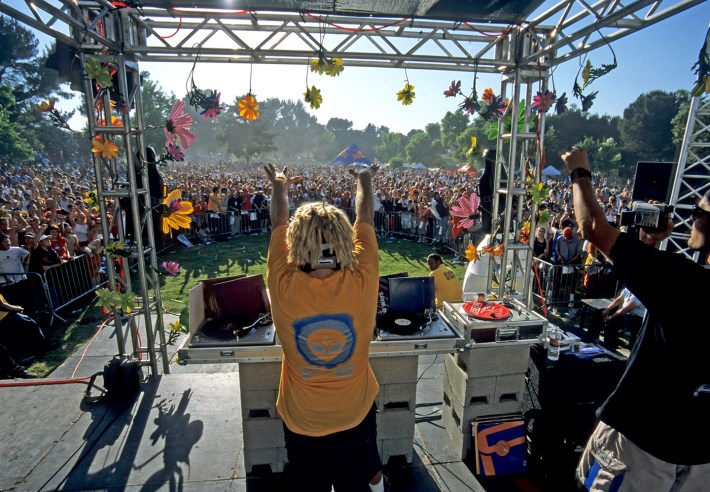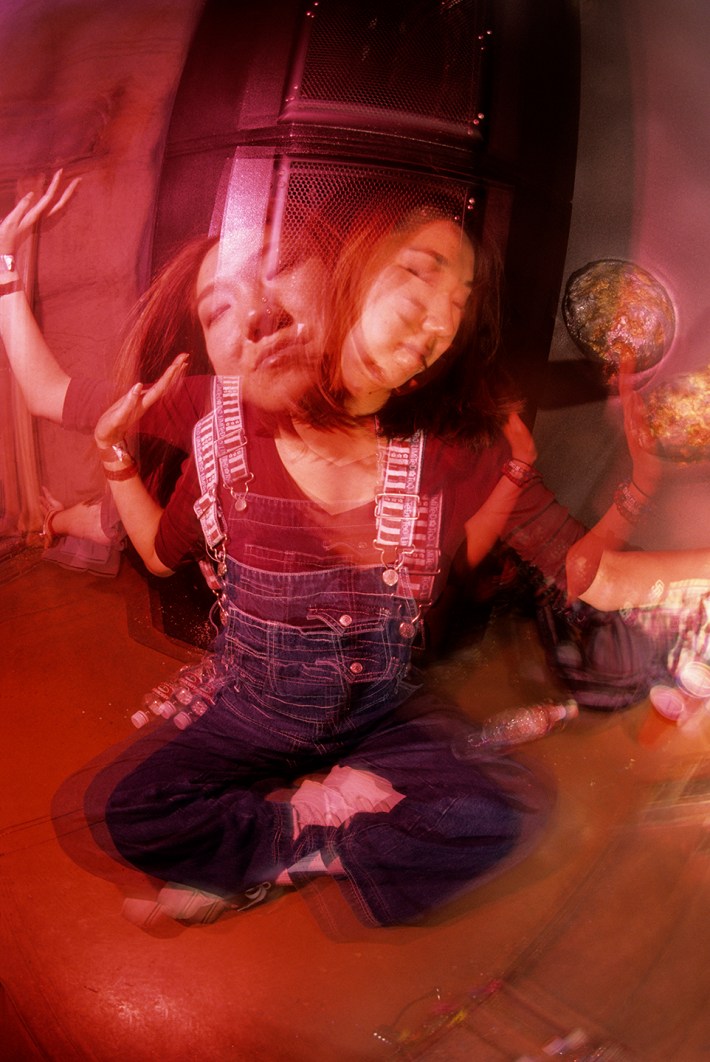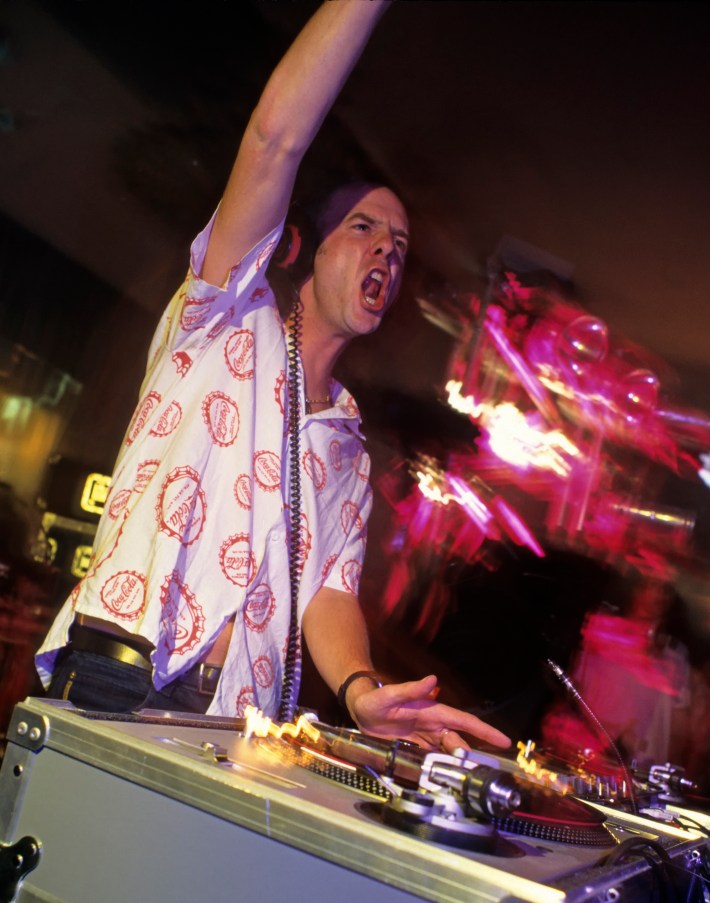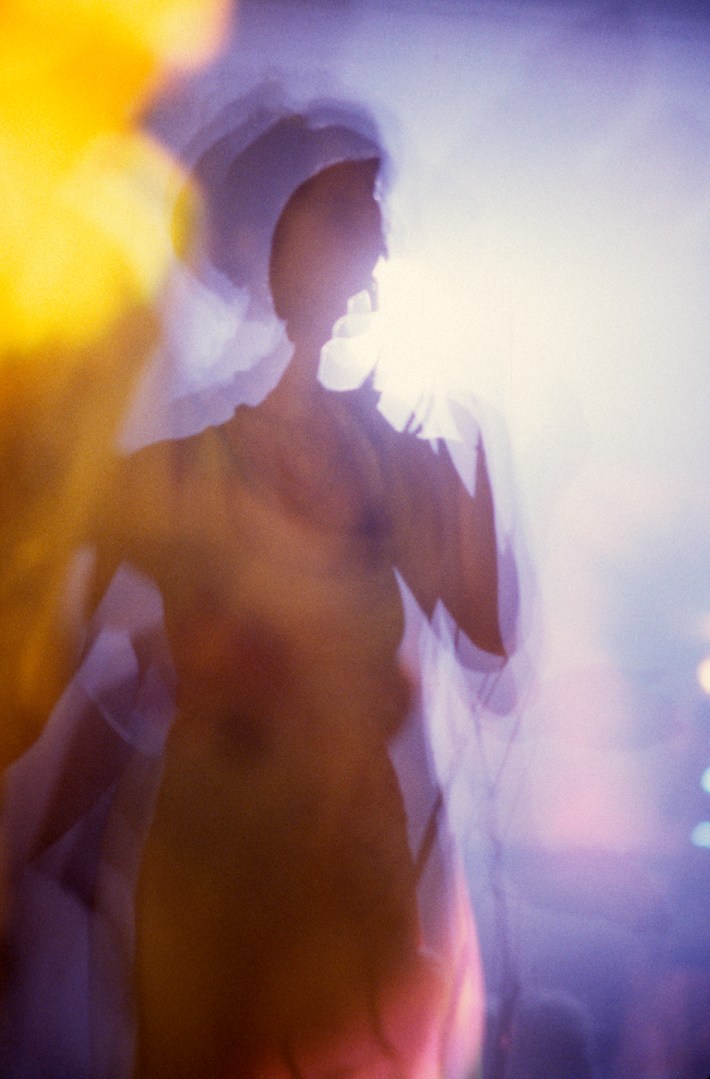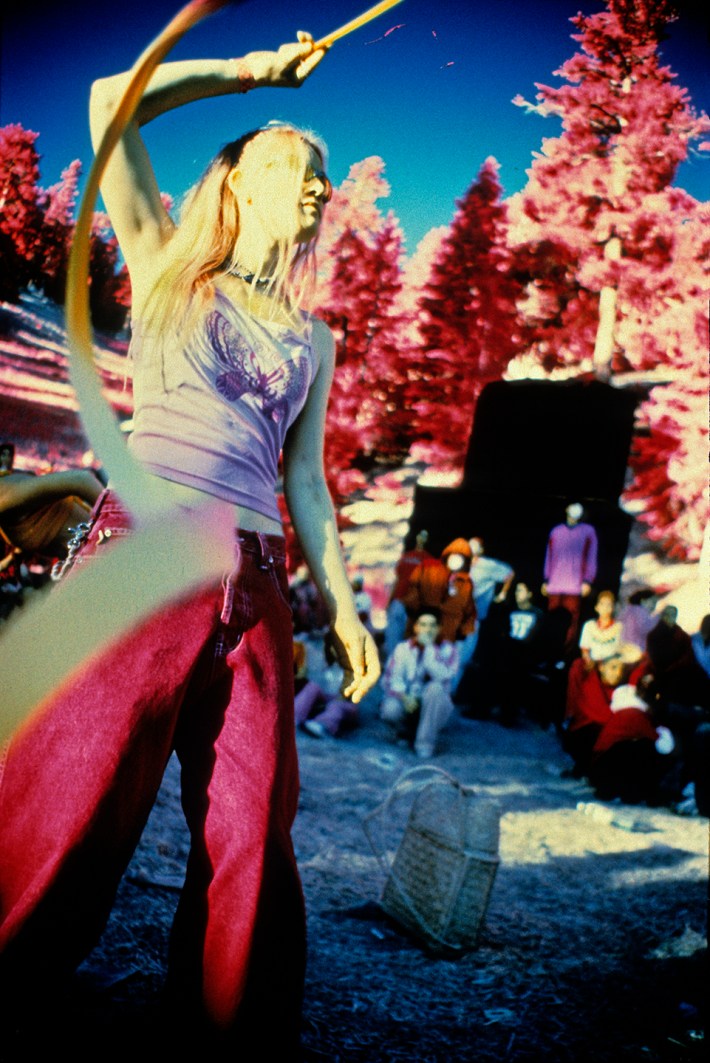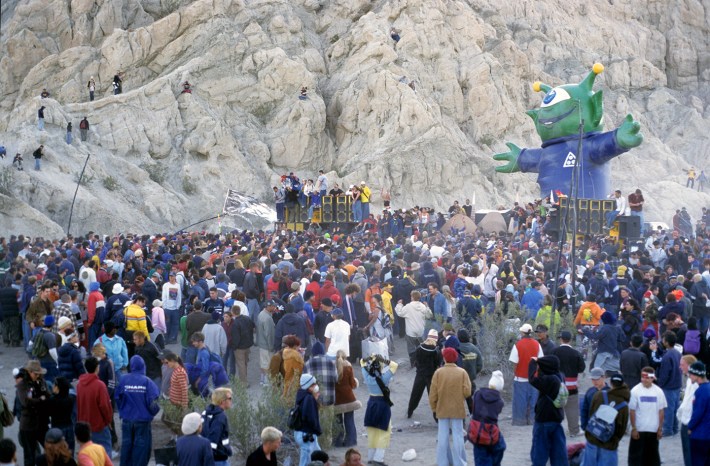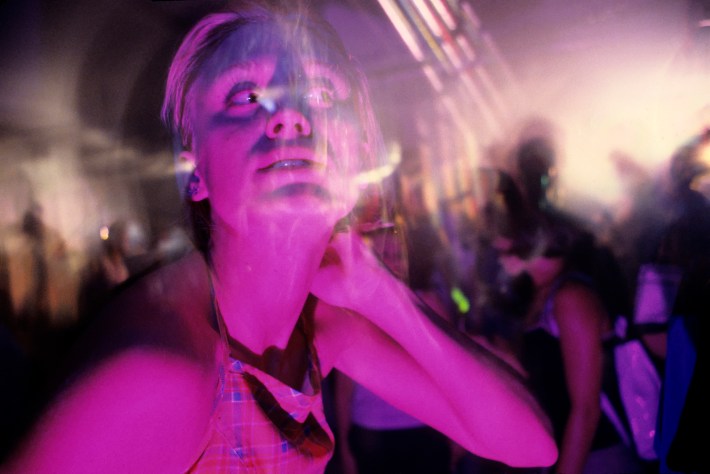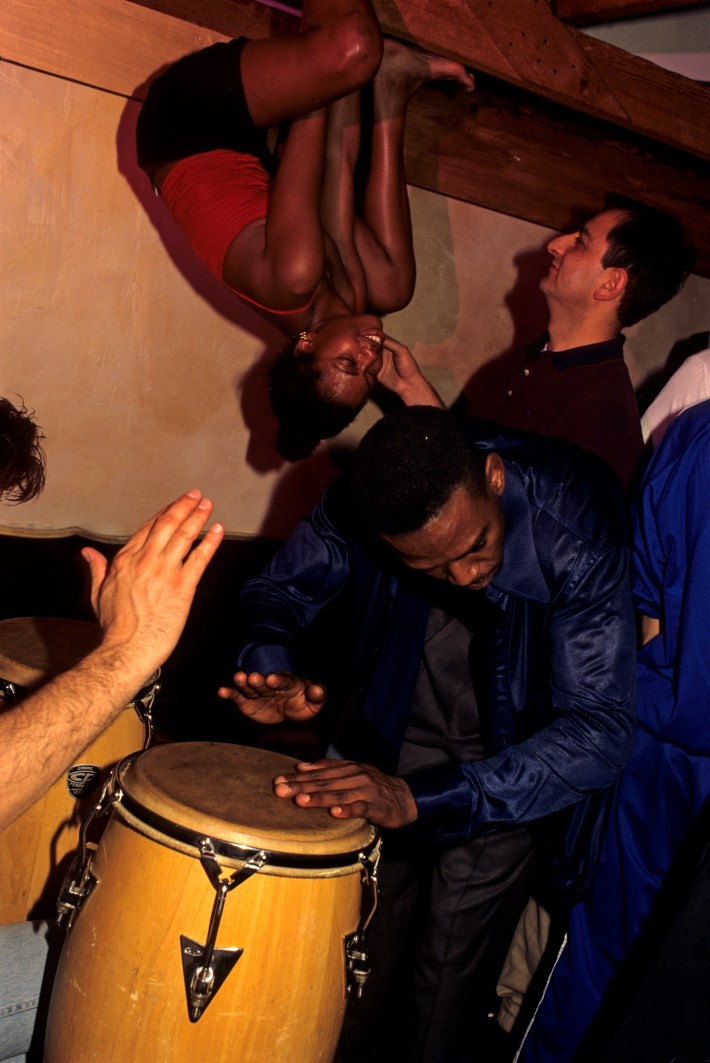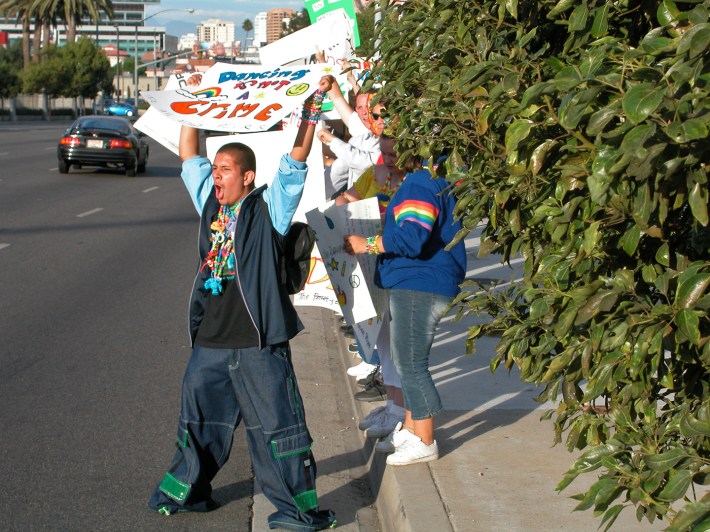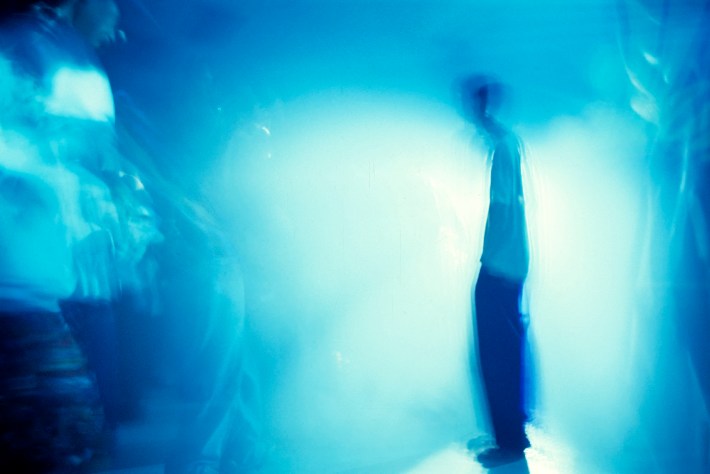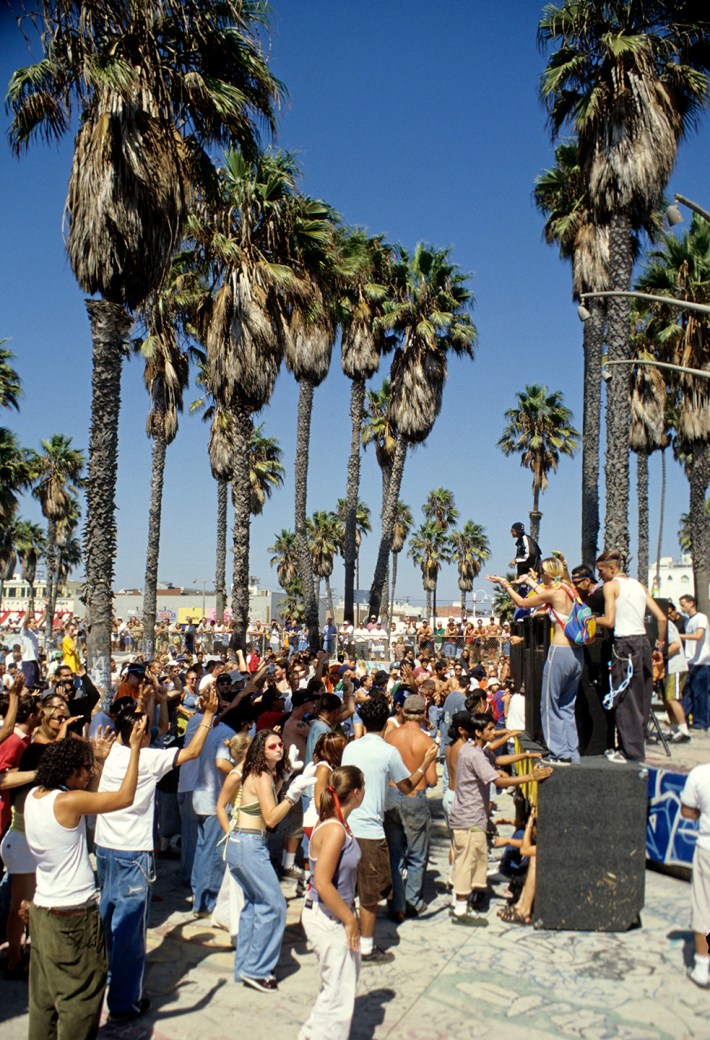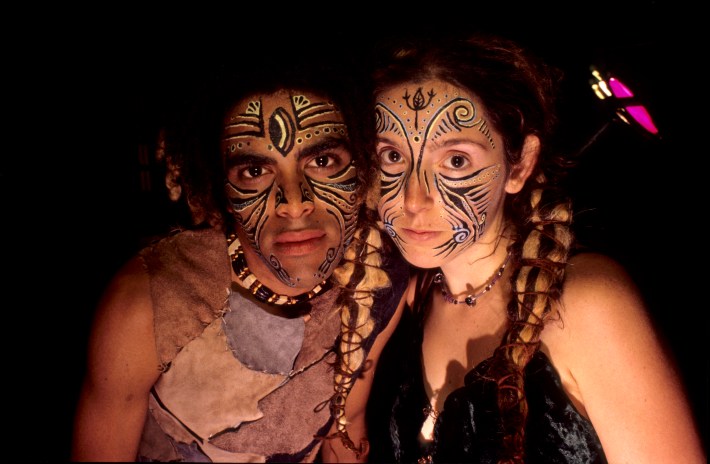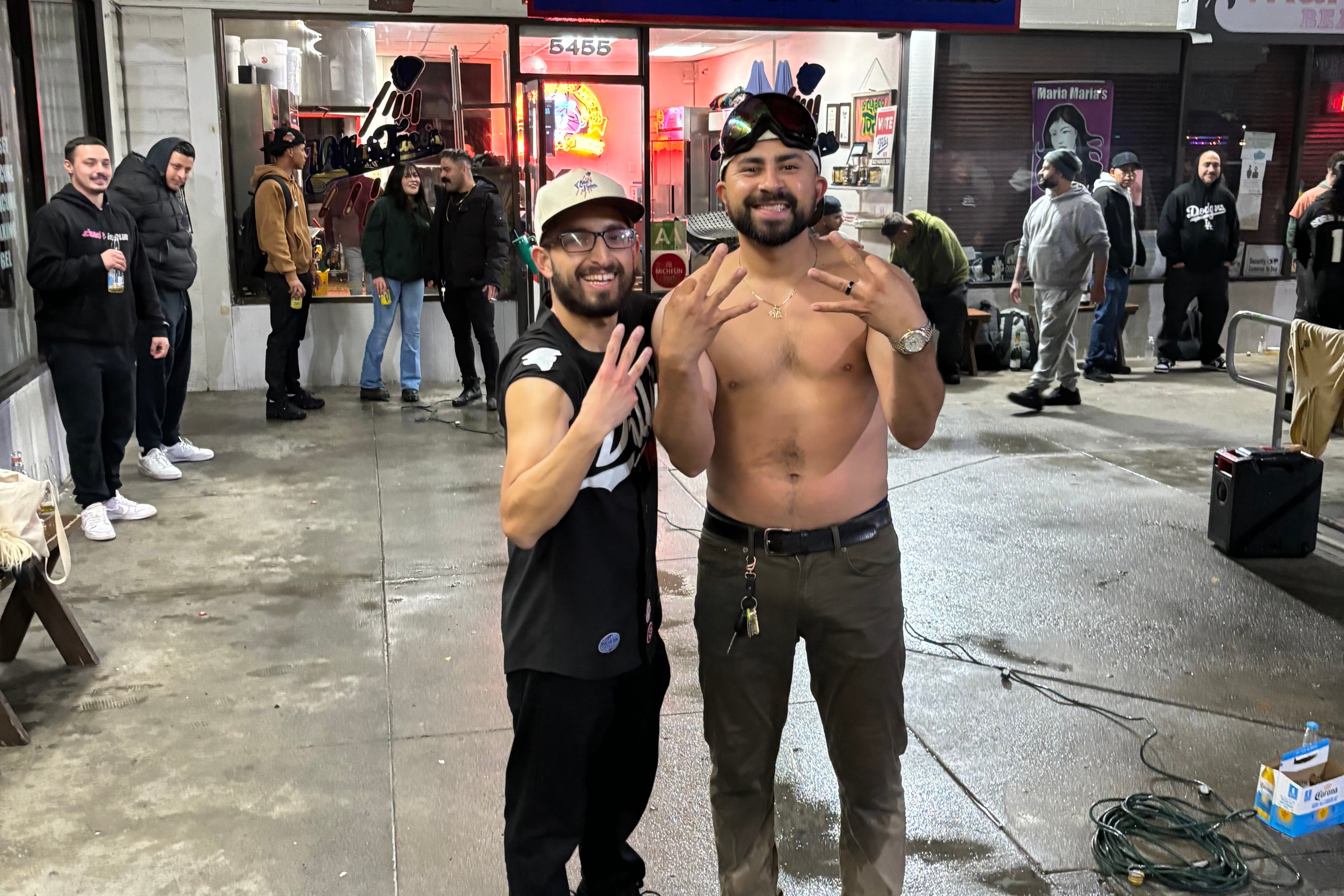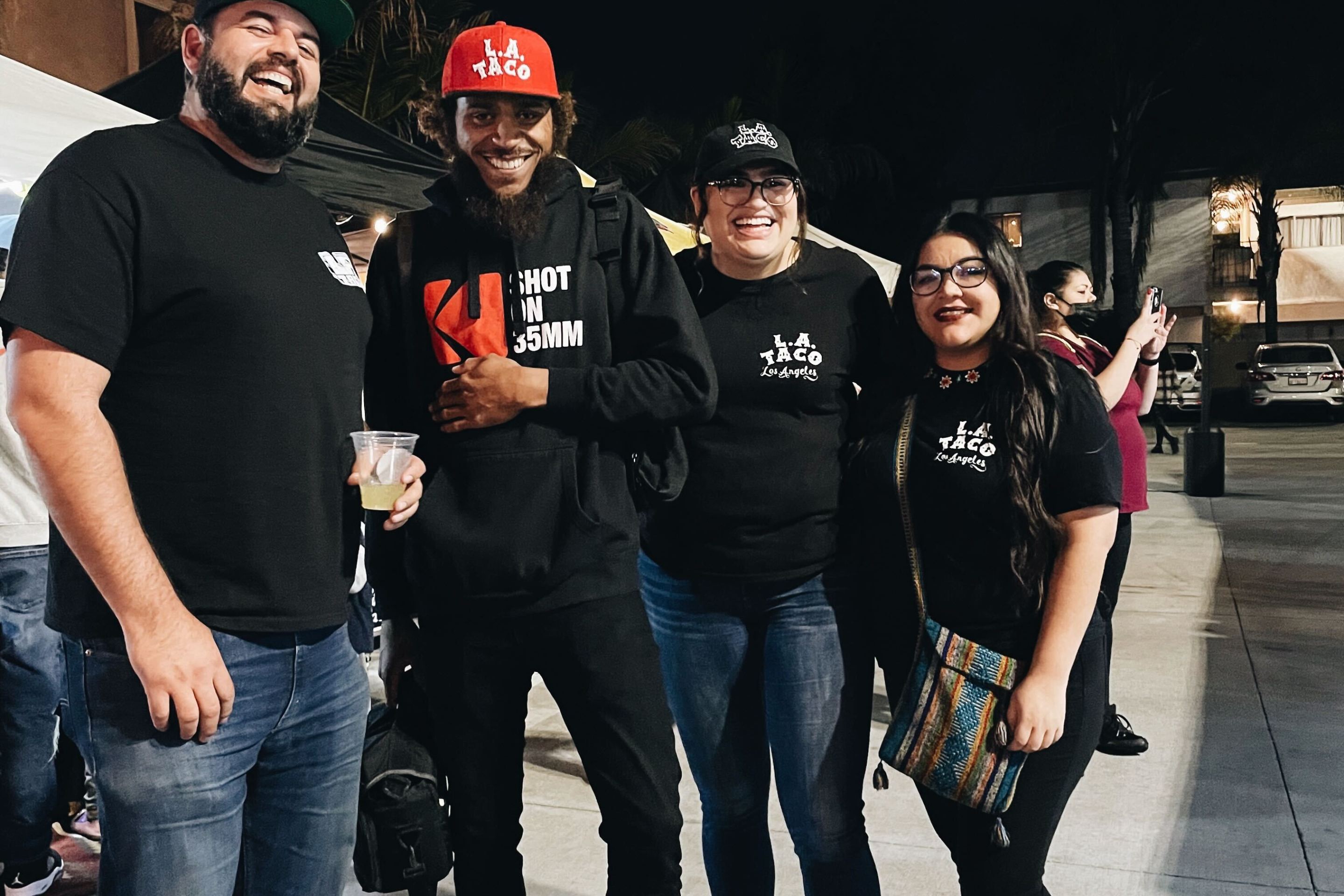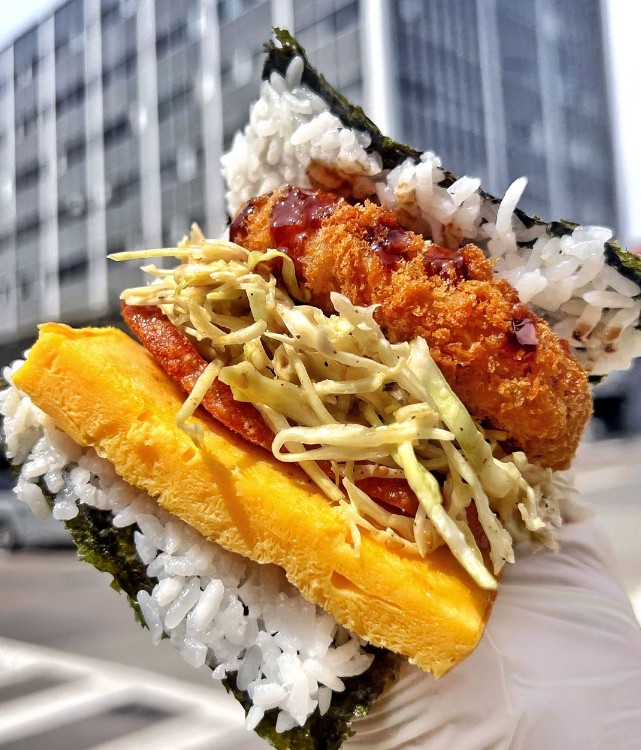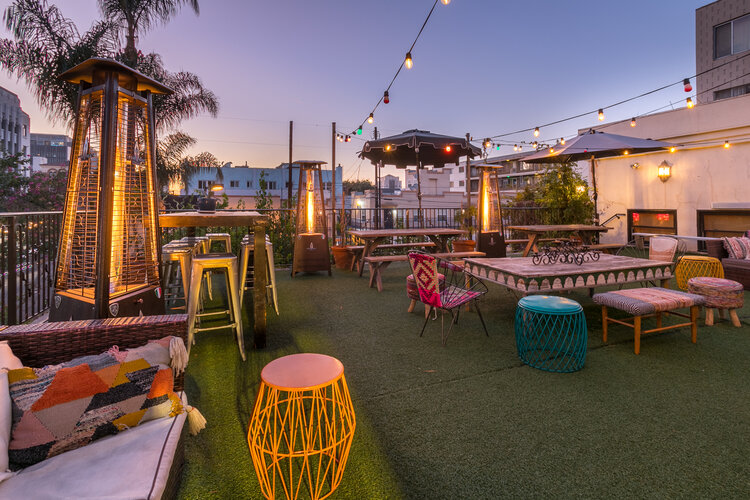Relive the 90’s LA Rave Scene in All its Glory ~ Interview with Photographer Michael Tullberg
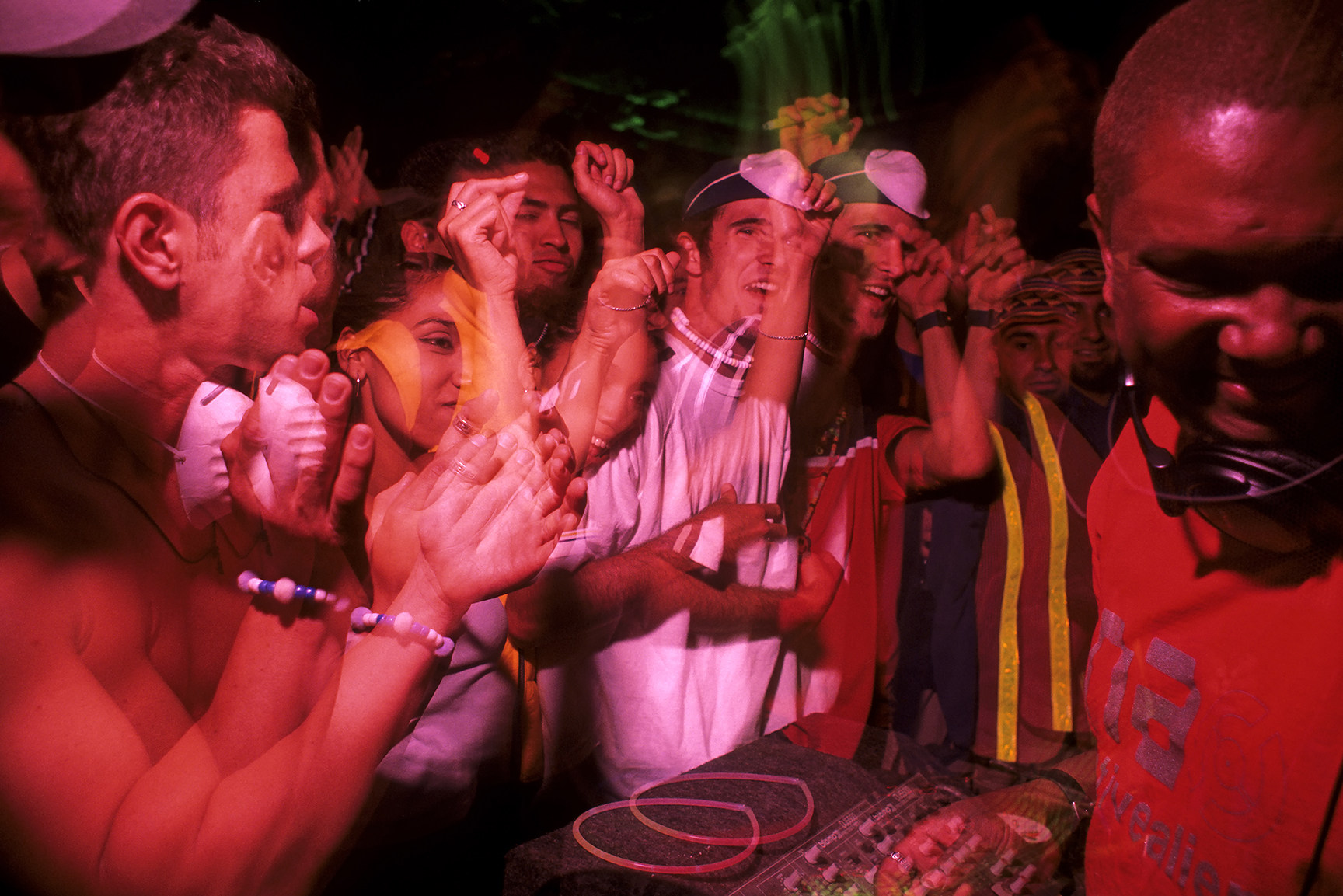
The rave canon says that Paradise Garage in New York opened up the dance floor to everyone and made the DJ relevant. The torch was then passed to the UK in the form of clubs dedicated to electronic music, massives in the countryside with portable soundystems, nascent DJ superstars, and lots of ecstasy. The scene then spread to Holland, who exported their handsome DJs worldwide and a global movement was born. Some ten years later it got reintroduced to the United States, who commercialized everything and ruined it.
This legend is based on facts, but it ignores the homegrown rave scene in Los Angeles that was both unique and a part of the global dance music explosion. When it comes to what the scene became, Los Angeles didn't have to commercialize anything imported, as the process of turning raves into big business was something that started right here.
Warehouse parties are usually associated with the UK, but LA's warehouse scene thrived for years and was the cornerstone of the LA underground dance music explosion. Most people reading this were probably too young to partake, so what did it look like? What did it feel like? Michael Tullberg has the answers. The LA scene's dedicated photographer, he invented new techniques to capture the energy and mood of raves in LA in the 1990s, which he collects in his book Dancefloor Thunderstorm. We asked Michael a few questions, and he was kind enough to answer and to share some of his iconic images from an exciting chapter in the history of our city...
What was your first introduction to the LA rave scene?
I had been photographing in the Hollywood club scene for a couple of years before I began investigating the rave scene in 1996, so at that point I was already familiar with shooting night life. I had become disenchanted with certain elements of the scenes I had been shooting, particularly the preening, elitist, velvet rope mentality found in many of the upscale L.A. clubs. So, I had my antennae up, looking for what was coming next. That turned out to be the rave scene, which was resurging after a long period of being forced deep underground by law enforcement and the media. Although I hadn’t been part of the rave scene before, I’d certainly been aware of it, so I decided to investigate and see what this was about.
When I started going to raves in the summer of that year, I immediately understood what was going on. It was a huge, grassroots musical movement that had virtually nothing to do with the mainstream entertainment business. It was incredible to me how this scene that was so below the radar was expanding and developing largely on its own, and that the quality of the music was so much higher than what could be found in the Hollywood clubs. It echoed the birth of hip-hop and punk in that way, and I knew in my gut that this movement was going to go somewhere. It was obvious, even at that early stage…so I jumped in with both feet.
The very first rave I went to photograph was called “Landing 2”, which was thrown in Burbank, of all places! We were about halfway into the gig when the ever-vigilant Burbank cops found the party and shut it down, with K-9 units. I remember watching one kid who was clearly rolling his ass off spot one of the German Shepherds, and approached the dog, wanting to pet it because he thought it was the cutest thing ever. I was like, “Oh no, no, no…” Fortunately the dog was cool about it (for whatever reason) and didn’t become aggressive. Not exactly an auspicious beginning, to be sure, but my curiosity had been tweaked, which led me to start shooting more parties. And more. And more…
What techniques did you develop to get the images you wanted, and how long did it take to figure out?
I developed several different photographic techniques for my rave scene shooting, with the purpose of getting that incredible rave vibe on the film. That fluttering, buzzing, proto-psychedelic ambiance that had been so missing in most club photography up until that point.
I started out using high speed film, but the truth is at one point or another I used practically every kind of film that could be found, including color negative, color slide, black and white, and even color infrared at times. I would often do very long exposures, and combine that with camera movement to create great swoops and swirls of color. I would use multiple strobe units with colored gels on the flash heads, so as to add even more color to a scene that was already often on the verge of visual overload. I would create stroboscopic effects with my flashes, and combine that with camera rotation to create vortex-like patterns. On occasion I would do light painting with a hand-held laser. All of these could lead to light and color streaking, bleeding and exploding all over the place on the film…just like at the party. It was all about expanding the palette and pushing the boundaries, so that someone not involved in the rave scene could look at the photograph and understand what was really happening.
When you're documenting a rave, do you feel like a part of the party or do you feel like an observer?
That is a very good question, because I’ve been in both positions. There are some gigs where I’ve felt at one with the fabric of the audience and the DJs, and other times where I’ve approached it from the outside, so to speak. It partly depends on who the DJ is, because over the years I’ve had to shoot some artists who I just didn’t want to listen to. But, you deal with that because it’s part of the job. Then there are those nights where I’m onstage with the DJ, at the center of the storm, the crowd is going nuts, and everything is clicking, which is fantastic.
Are you tempted to drink or otherwise party while you're working?(chuckles) It’s been known to happen on occasion.
What were the proper ingredients for a rave in the 90's in LA?
The ingredients were pretty simple: one part good venue, one part quality DJs, one part receptive audience, one part killer sound system, and one part good promoters. Add “special seasonings” to taste (I think you can figure out what that means) and mix well with plenty of water. Worked almost every time.
Do you have a particular party that stands out as the most epic?
This is the problem when you shoot hundreds of parties over the years—there were so many great nights (and days!) that it becomes virtually impossible to pick just one event that stands out over all the others. The one that comes to mind at the moment is the “Together As One” 1999 New Years Eve rave at the L.A. Sports Arena. The headlining roster was truly epic: Carl Cox, Frankie Bones, DJ Dan, Donald Glaude, Jesse Saunders, the X-ecutioners and so many others. Donald kicked off the new year with, appropriately enough, a remix of Prince’s “1999”. He was great, Carl was great…but Frankie really stole the show that night. He was on fire. He definitely inspired me to create one of my best pieces of him, combining tungsten film, stroboscopics with a yellow gel, and a long exposure with camera rotation. It really captures the atmosphere in a big way, in a manner that conventional photography simply couldn’t. When Frankie saw it for the first time years later, he just about flipped out.
Do you have a lucky number?
Yes, whatever number that’s accompanied by a dollar sign on a check, preferably with lots of zeroes. Zeroes make those numbers very lucky, indeed.
What's your favorite tune from that era?
Probably “That Zipper Track” by DJ Dan.
When did you realize that you were a part of something special? When did you realize you were creating a career as a dance music photographer?
I realized that the rave scene was something incredibly special right from the get-go. It was totally unlike any other social or music scene in L.A., and I knew this because I had been through several of those already. To me, the rave scene represented just about everything that an underground music movement should be: tight-knit but growing, self-reliant, tenacious, incredibly positive, and absolutely forward-thinking in its music philosophy. We were the trailblazers for dance music in America, and we knew it, along with the fact that this was an incredibly vital and important time period in American pop culture. We in L.A. in particular were in a uniquely privileged position, because Southern California had become the center of American raving culture. Rave culture had spread across the country by this time, but L.A. was the core, for a variety of reasons. So, we were very fortunate in that regard, and as a result we enjoyed that whole period to the hilt.
As far as this becoming my career was concerned, that didn’t really sink in until about two years into it, when I began writing and photographing for most of the country’s major dance music magazines. I’m talking about publications like URB, BPM, Mixer, Insider, Lotus…they enabled my material to be found nationwide on at least a semi-regular basis. Thanks to them, I began being sent out to parties all over the country, and then shooting album covers for DJs like Carl Cox and Ferry Corsten. As work started coming in on a more regular basis, I slowly realized that this was the path that I was going to follow.
Some of the best parts of 90's raves were various characters who would show up on the scene. I imagine you must have loved shooting them- are there some particular people that were very memorable?
The rave scene definitely had no shortage of characters, as it was one of the few scenes around that would allow someone to go completely out there as far as fashion and attitude were concerned. Again, it was like early punk and hip-hop in that way. Very few DJs were like that—the majority of these people were either ravers or promoters.
The most visually striking of this group were probably the Club Kids, who took fashion to what then would have been called androgynous/nihilistic extremes. However, these Club Kids took many of their cues from the original Club Kids in New York—the ones who were in the center of the whole “Party Monster” debacle. Locally, there were others who picked up the DIY Kandi Raver thing and ran with it, developing their own rave fashion in the process. They had to, because there were virtually no stores who would carry party apparel like this at the time. Some of the most memorable were the Toy Ladies, a pair of rave fashionistas who really helped define the SoCal raver look. They were regularly churning out bright, over-the-top outfits that you couldn’t help but notice. Thanks to the magazines, it wasn’t long before ravers across the country started copying and adapting their designs. They certainly weren’t the only ones doing this, but they were definitely ones that stood out.
What's your favorite taco spot?
Probably the Kogi Truck.
When and where were you most happy?
The time period in my book “DANCEFLOOR THUNDERSTORM: Land Of The Free, Home Of The Rave” is probably when I was happiest: 1996 through 2002. This was when I was developing and honing my craft, while the scene I was covering was growing at a nearly exponential rate. Every year, the parties got bigger and bigger, and riding that wave with the people who ran Insomniac, Go Ventures, B3 CandE and CPU101 (the major rave production companies of the day) was for the most part fantastic. It was great to watch events like “EDC” expand from its humble beginnings into the monster event that it is today. Being part of a successful, growing community like that is a very fulfilling feeling.
If you could design your own rave, what would it be like? Who would be there? Where would it take place?
Well, I’m a huge fan of Japanese pop culture, so I’d probably throw a Japan-themed party. It would feature (visually) anime, Godzilla, Gamera, Ultraman, Kamen Rider, vocaloids, martial arts and tons of insane Japanese commercials. Cosplayers would abound. Ken Ishii and Satoshi Tomii would headline, naturally. Maybe we could get Babymetal to show up. I’d throw it at the Alexandria Hotel in downtown, because that place was rave central back in the day, and it’s at the center of a lot of L.A. ravers’ memories.
You can buy Dancefloor Thunderstorm here.
Stay in touch
Sign up for our free newsletter
More from L.A. TACO
Announcing the TACO MADNESS 2024 Winner: Our First Ever Three-Time-Champion From Highland Park
Stay tuned for the new date of our TACO MADNESS festival, which was unfortunately postponed this last Saturday due to rain.
What To Eat This Weekend: Cannabis-Infused Boat Noodles, Thai Smashburgers, and “Grass & Ass”
Plus, a pizza festival and a respected chef from Toluca, Mexico comes to Pasadena to consult for a restaurant menu, including enchiladas divorciadas, and more.
Facing ‘Immediate Layoffs,’ L.A. TACO Launches Membership Drive to Save Our Publication
After Sunday, we do not have enough money to make another payroll. We need 5,000 members to become sustainable. Our deadline is April 26th to hit this goal.
This New Koreatown Onigiri Spot Is Unlike Any Other in Southern California
Supamu, which started as a food truck and a series of pop-ups, brands itself as Southern California’s first Okinawa-style onigiri. What sets its onigiri apart from competitors? All the details are in the post, plus where to find it.
When ‘Tomorrow’ Never Comes: The Saga of a DTLA Bar Staff’s Struggle To Get Paid
A barback recalled a time when he had to use a payday loan app to cover a dinner bill. “How can you, with a straight face, hand someone a check knowing that there isn’t money in the account,” the barback questioned.
